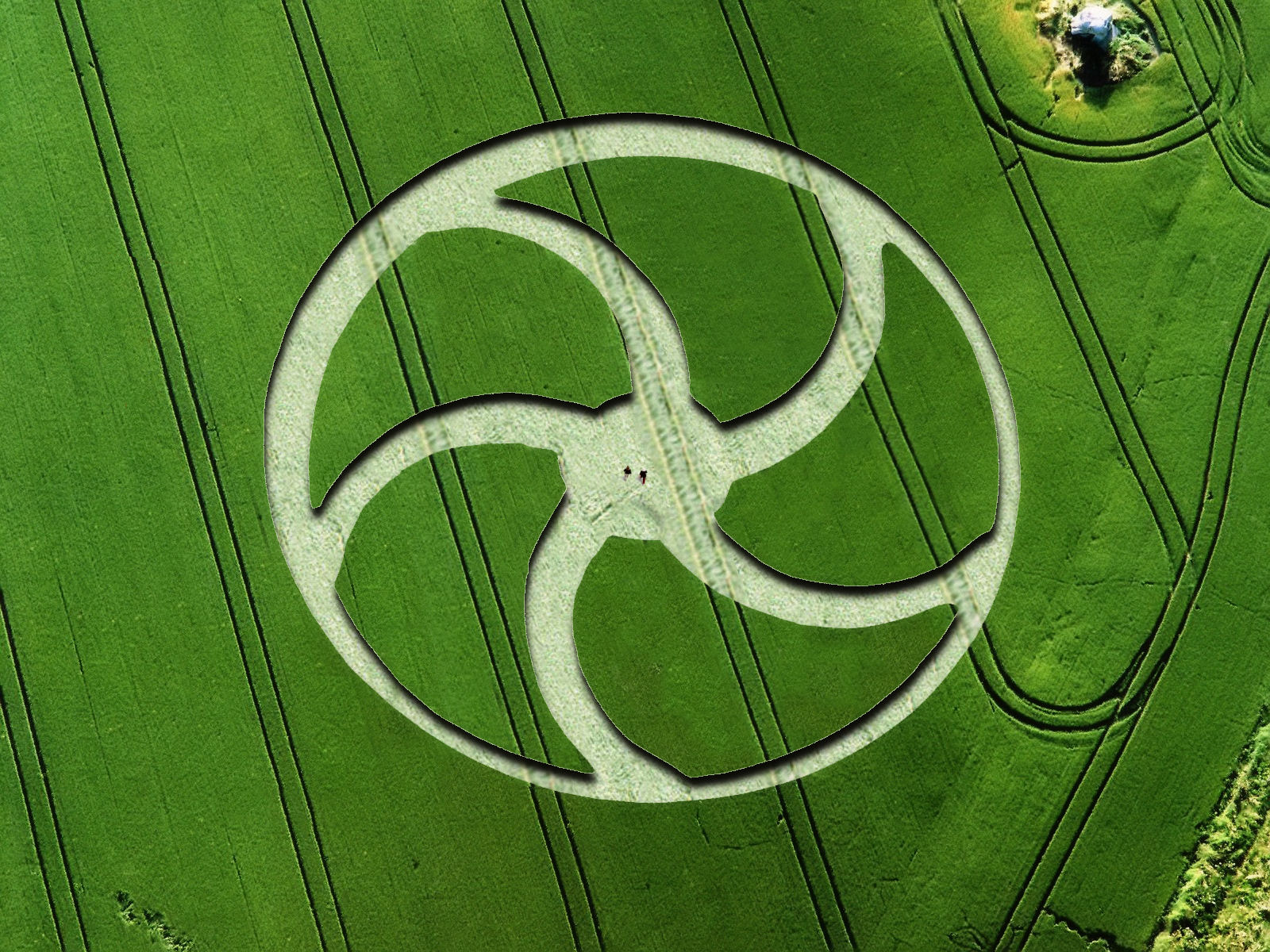
The Over Night Crop Circles: Man-Made Hoax or a Mystery
over 10,000 crop circles recorded in the late 20th century
The phenomenon of crop circles has captivated the imaginations of people around the world for decades. These mysterious geometric patterns, found flattened into fields of wheat, barley, rye, and other crops, have become a symbol of unexplained mystery and, for some, extraterrestrial contact. While skeptics dismiss them as elaborate pranks or art projects, others see crop circles as evidence of something beyond our current understanding, possibly even communication from intelligent life beyond Earth.
But what exactly are crop circles? How many are there? Who, or what, is making them? Are they truly a mystery, or is the answer simpler than we think? And which country has the highest number of them? This deep dive into the crop circle mystery explores the origins, patterns, theories, and enduring questions surrounding this captivating phenomenon.
What Are Crop Circles?
At their core, crop circles are areas in a crop field, usually cereal grains, where the plants have been flattened in intricate, geometric patterns. The key aspect of a crop circle is that the plants are typically bent but not broken, and often the designs are so symmetrical and complex that it seems impossible they could be made overnight by humans.
These patterns can range from simple circles to elaborate formations hundreds of feet across, incorporating mathematical precision, sacred geometry, and often elements found in fractal design. They tend to appear during the summer months when crops are at full height, and they are usually discovered at first light, often with no signs of activity during the night.
How Many Crop Circles Are There?
Since records began in the late 20th century, over 10,000 crop circles have been documented worldwide. However, the exact number is hard to pin down. New formations are reported every year, primarily during the peak summer months, when crops are tall and mature enough to display the designs.
The number fluctuates year to year. For example, the late 1980s and 1990s saw a surge in formations, especially in southern England, which remains the world’s hotspot. In recent years, reports have declined somewhat, possibly due to increased awareness of hoaxers and landowner pushback. Yet even with surveillance technology and drones, new circles continue to appear under mysterious circumstances.
The History of Crop Circles
Although crop circles became a public fascination in the 1970s and 1980s, some enthusiasts argue they have been with us for centuries. One of the earliest references comes from a 1678 woodcut pamphlet called The Mowing Devil, which shows a demonic figure cutting a circle into a field. While this could simply be metaphorical, some take it as evidence of pre-modern crop circle sightings.
The modern crop circle movement began in earnest in the late 1970s in southern England, particularly in the county of Wiltshire. Initially, these formations were simple circles. But as public interest grew and theories swirled, so did the complexity of the designs. By the late 1980s, intricate patterns featuring multiple circles, straight lines, and symbols began to appear.
Are Crop Circles a Mystery?
Crop circles are a genuine mystery in the sense that their sudden appearance, scale, and complexity defy easy explanation. Some circles have appeared within minutes in fields under surveillance. In other cases, electromagnetic anomalies and strange lights have been reported near new formations. Soil samples from inside circles sometimes show unusual changes, like blown-out plant nodes or altered crystalline structure, which some researchers argue are hard to explain via mechanical flattening alone.
Many crop circles have been confessed to or proven to be man-made. In 1991, two British men, Doug Bower and Dave Chorley, famously admitted to creating hundreds of crop circles in southern England using planks of wood, rope, and a garden roller. Their confession was widely seen as a debunking of the phenomenon.
However, not all crop circles have such clear origins, and some researchers argue that there is a core of genuinely unexplained cases amid the admitted hoaxes.
Who Makes Crop Circles? Do Farmers Make Them?
Theories about who or what makes crop circles fall into several categories:
1. Human Hoaxers and Artists
The majority of crop circles are believed to be the work of human circle-makers, artists or pranksters who design and create these patterns overnight. Tools include measuring tape, rope, planks, and surveyors’ equipment. Some groups, like the Circlemakers collective in the UK, have even been commissioned by companies like Nike and Pepsi to create crop circles as promotional art.
Do farmers make crop circles themselves? In general, no. Most farmers see crop circles as vandalism. A single large formation can destroy hundreds or thousands of dollars’ worth of crops. While some farmers have monetized circles by charging entry fees to curious visitors or researchers, most do not welcome the formations.
2. Extraterrestrial or Paranormal Theories
For some believers, crop circles are the result of advanced beings, possibly aliens, attempting to communicate or display their technological prowess. Proponents point to recurring mathematical patterns, such as the Mandelbrot set or Fibonacci spirals, which seem to contain coded messages or universal constants.
Others believe the circles are formed by plasma vortices, a kind of atmospheric energy burst, or are the result of earth energies, magnetic fields, or even time-space distortions.
Which Country Has the Most Crop Circles?
Without question, the United Kingdom, specifically England, has the highest number of crop circles. More than half of all known crop circles have appeared in England, especially in the counties of Wiltshire, Hampshire, and Oxfordshire.
One reason may be cultural: England is where the modern crop circle movement began, and it has a well-developed infrastructure of crop circle researchers, enthusiasts, and even artists. The ancient landmarks of the area, such as Stonehenge, Avebury, and Silbury Hill, also seem to be connected to many crop circle locations, leading to theories about earth energies and ley lines.
Other countries with notable crop circle activity include:
Germany
Italy
The United States (particularly in California, Oregon, and Midwest)
Canada
Australia
However, few regions rival the consistency and density of crop circle formations in southern England.
How Long Do Crop Circles Last?
The lifespan of a crop circle depends on a few factors:
Crop Type and Harvest Time
Most crop circles appear in cereal grains, which are harvested in late summer. This means that any crop circle will typically only last a few weeks before the field is harvested or the plants die off naturally.Weather and Natural Decay
Rain, wind, and natural regrowth can degrade the pattern. After a week or two, many crop circles lose their sharp definition and become difficult to see, especially from the ground.Farmer Intervention
Some farmers deliberately destroy crop circles as soon as they find them to prevent trespassing or media attention. Others leave them intact temporarily to allow researchers or tourists to visit, for a fee.
While temporary in physical form, crop circles often live on through aerial photography and satellite imagery, becoming part of the ever-growing digital archive of unexplained phenomena.
Why Do Crop Circles Fascinate Us So Much?
At the heart of the crop circle mystery is the human desire for connection, mystery, and meaning. In an age dominated by science and technology, crop circles seem to straddle two worlds: the known and the unknown. They are simultaneously artistic and mathematical, beautiful and perplexing.
The mystery is amplified by the questions crop circles raise:
Why would humans invest so much effort into these elaborate designs with no clear audience?
If they are man-made, why do some show electromagnetic anomalies?
If they are not man-made, what force can bend crops without breaking them and create mathematical symbols in a matter of minutes?
They touch on themes of communication, aesthetics, nature, and intelligence, whether human or otherwise.
Crop Circles in Pop Culture
Crop circles have become embedded in pop culture, from TV shows like The X-Files to blockbuster movies like Signs (2002), where they are depicted as signs of alien invasion or communication. They also appear in music videos, conspiracy theories, and even spiritual literature.
Their cultural significance often surpasses their scientific relevance, which is part of their enduring charm.
Scientific Research and Skepticism
Mainstream scientists generally view crop circles as anthropogenic, created by humans. Studies on soil composition, plant damage, and electromagnetic readings have yielded mixed results. Some researchers claim anomalies, but others argue these can be explained by natural variation or mechanical interference.
Nevertheless, serious study of the phenomena continues through organizations like the BLT Research Team and individual researchers such as Colin Andrews and the late Dr. Terence Meaden, who proposed meteorological explanations.
Despite decades of investigation, a subset of crop circles continues to defy easy explanation.
A Mystery That Endures
Are crop circles a mystery? The answer is both yes and no. Many are now known to be man-made, part of an evolving folk art tradition and media phenomenon. But some formations remain enigmatic, appearing in places with no known human activity, displaying complex designs that seem beyond casual effort, and leaving behind strange physical traces.
As of today, no definitive scientific proof has emerged linking crop circles to extraterrestrials or unknown forces. Yet, the phenomenon continues to inspire awe, skepticism, and curiosity alike.
Perhaps that’s the greatest mystery of all: not what crop circles are, but why they continue to hold such power over the human imagination. Whether symbols from another world or the anonymous artistry of our own species, crop circles remind us that some questions are more valuable for the wonder they provoke than the answers they provide. image/Ian Burt/https://www.flickr.com/photos/oddsock/




